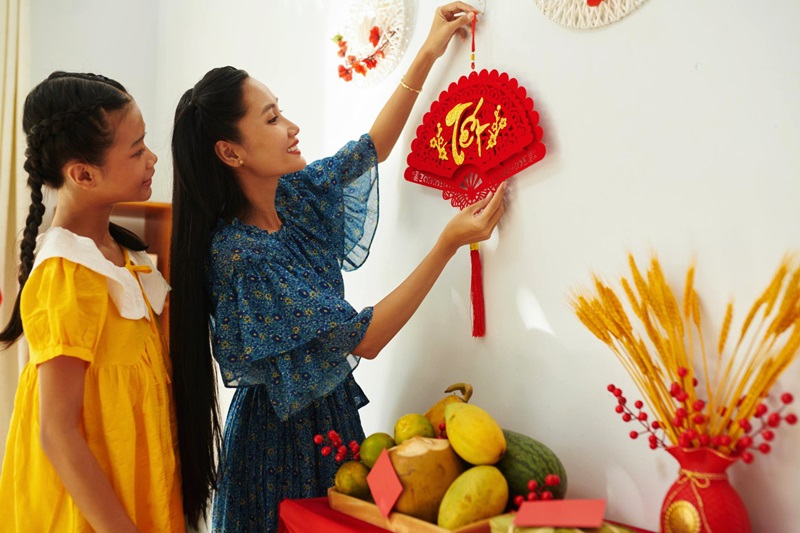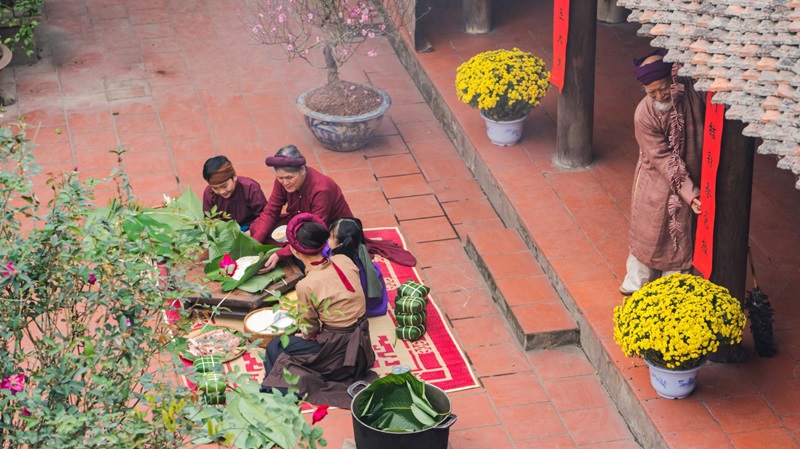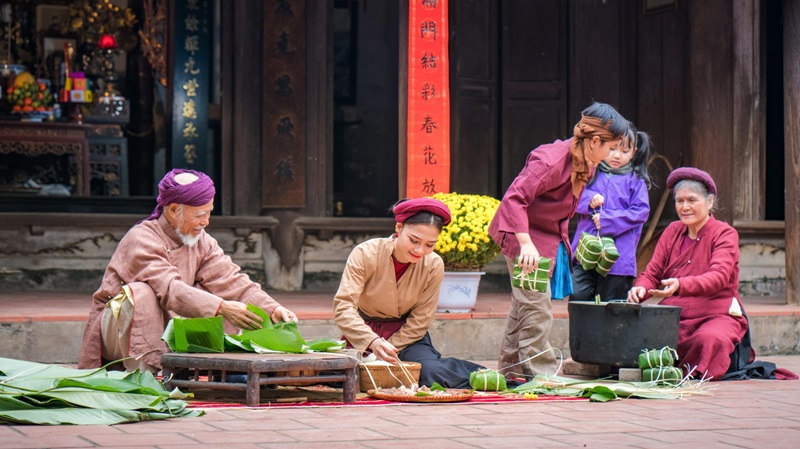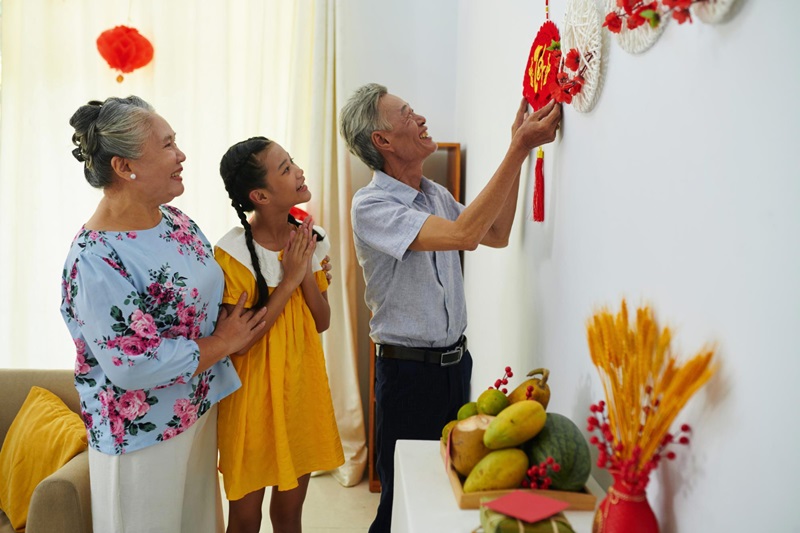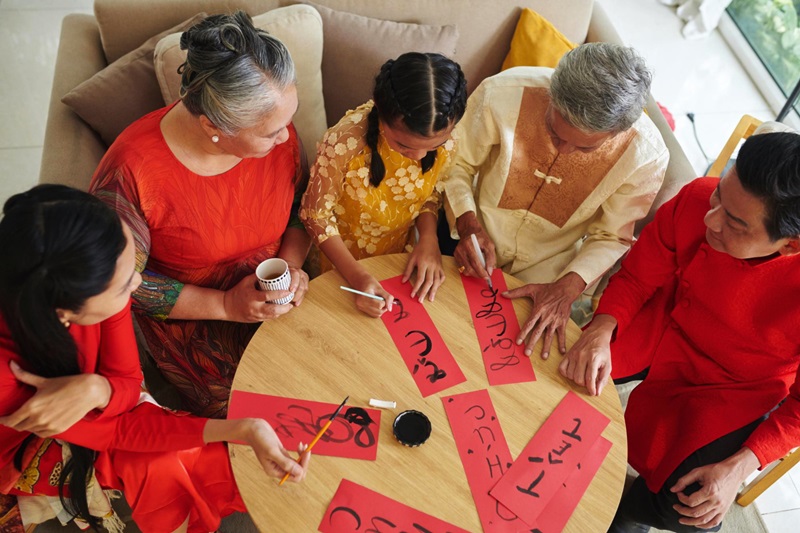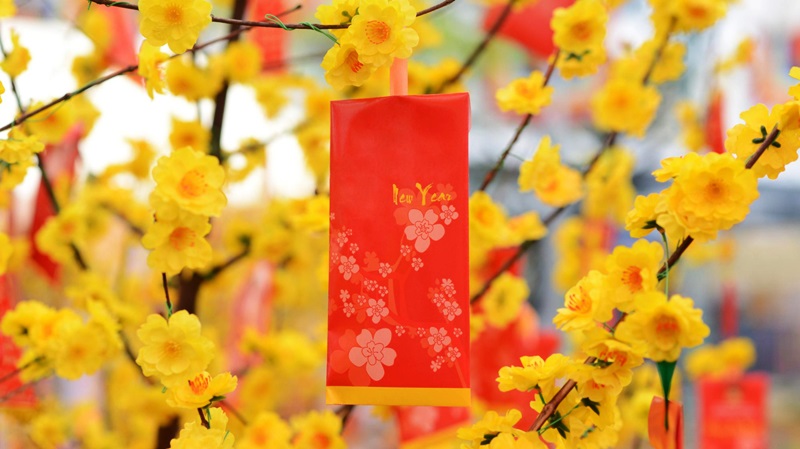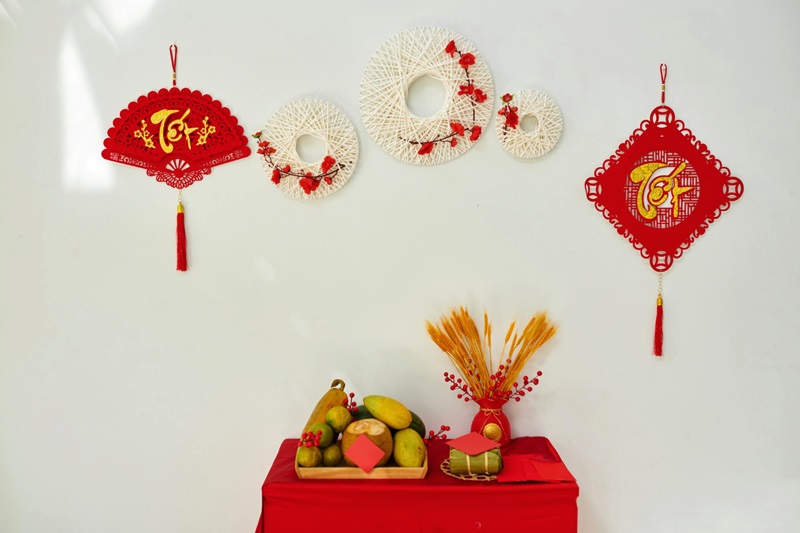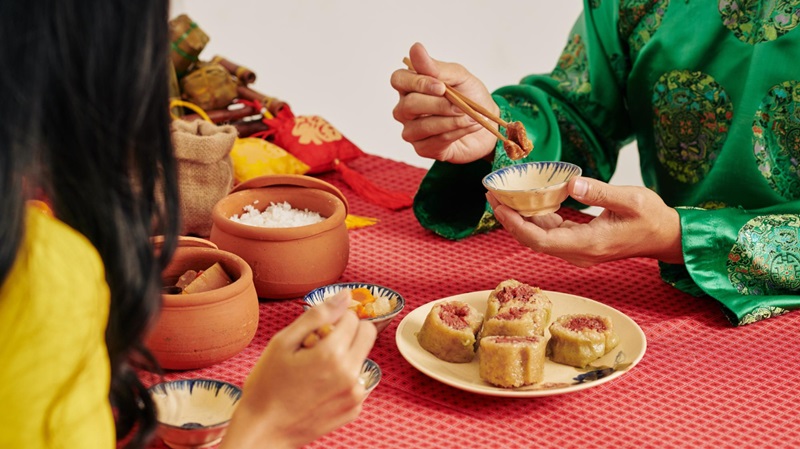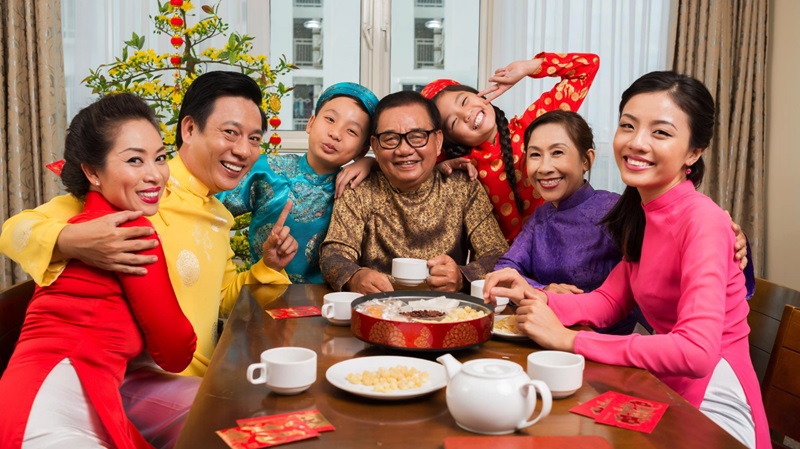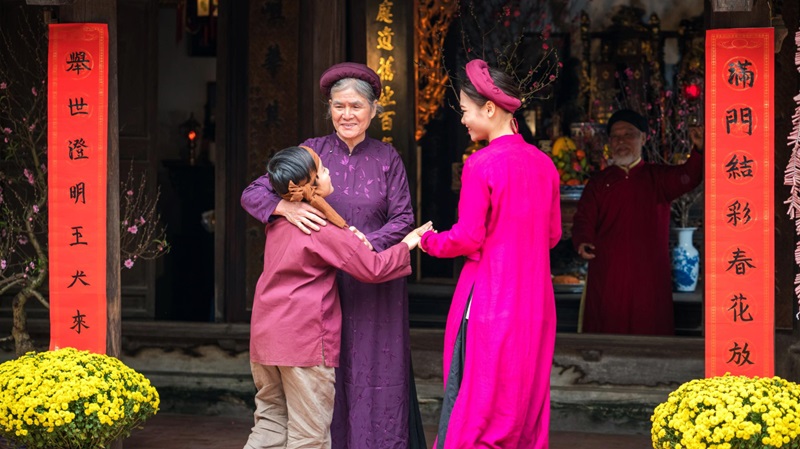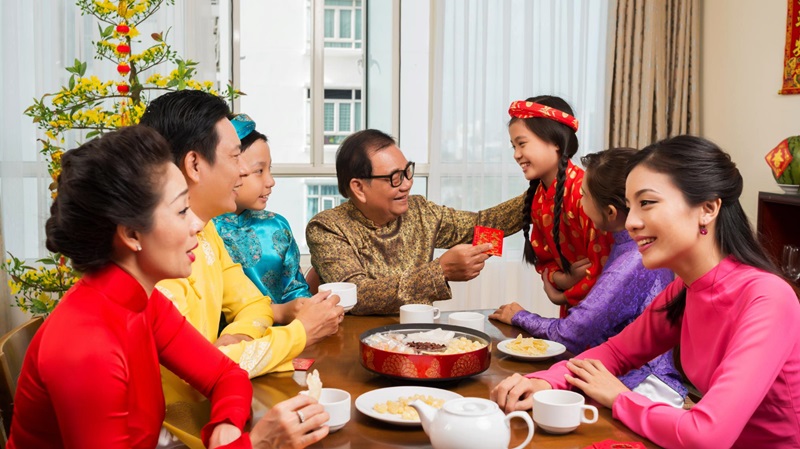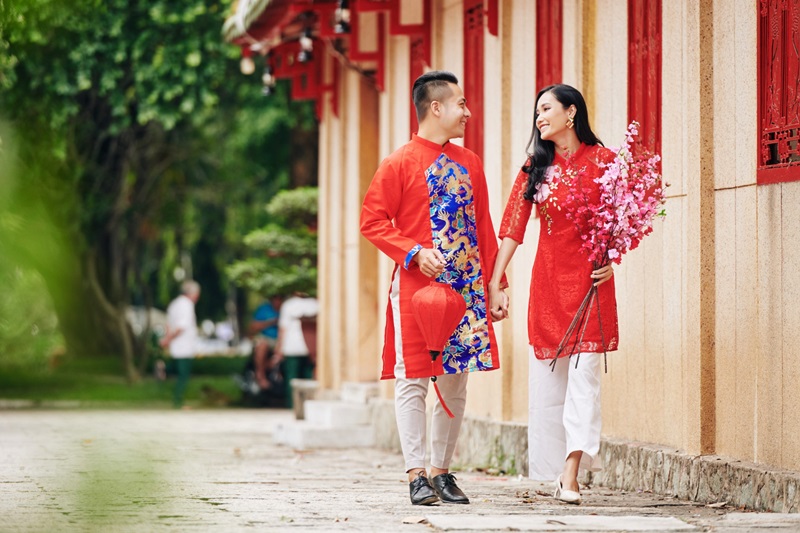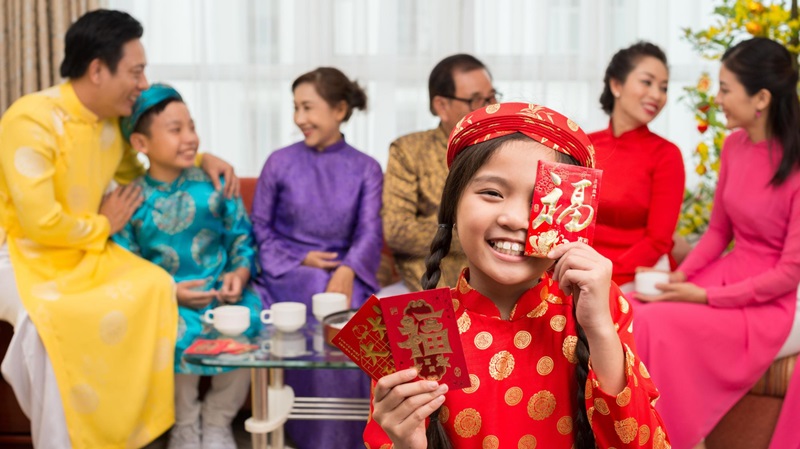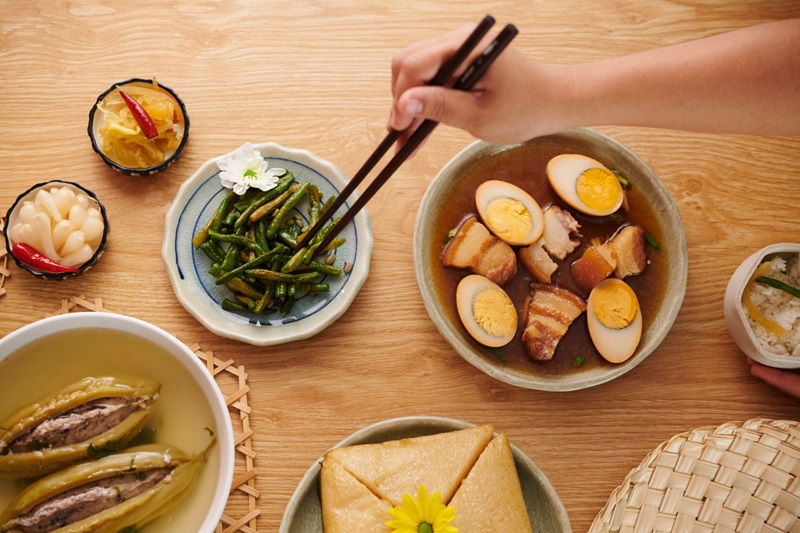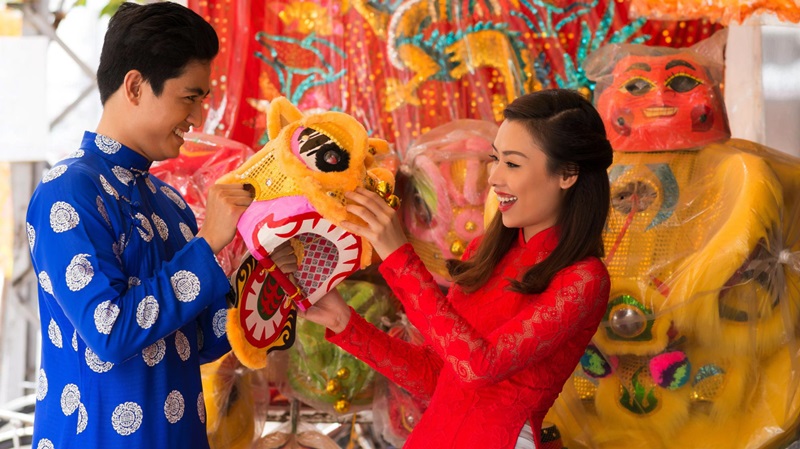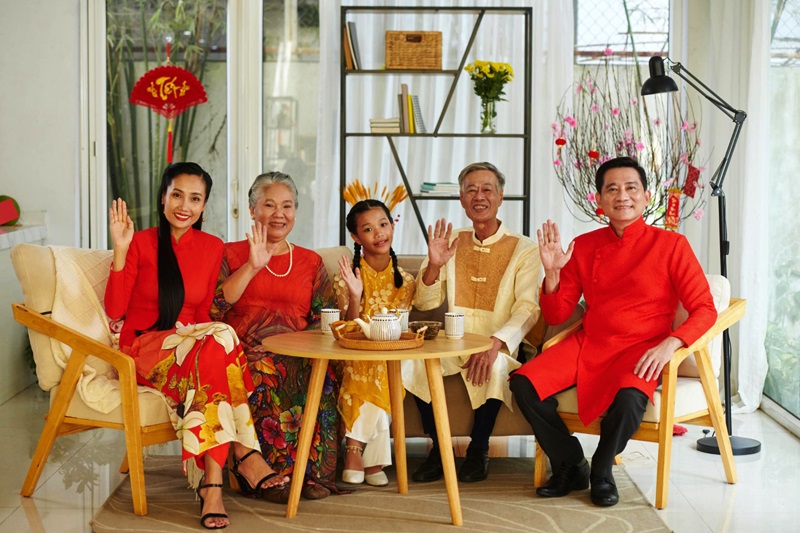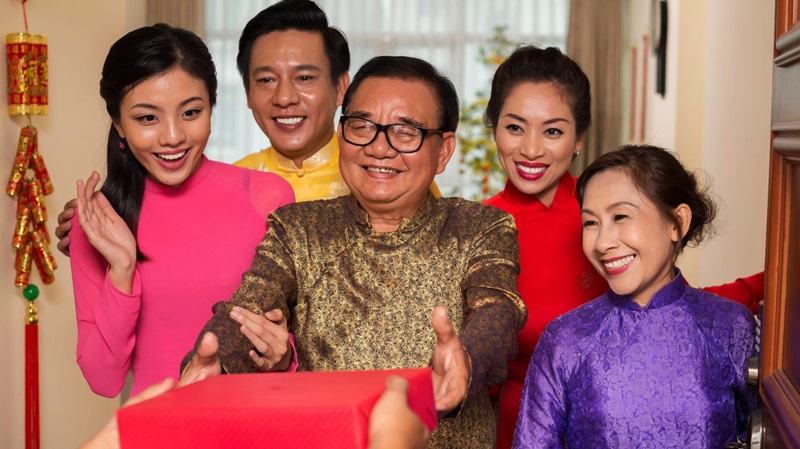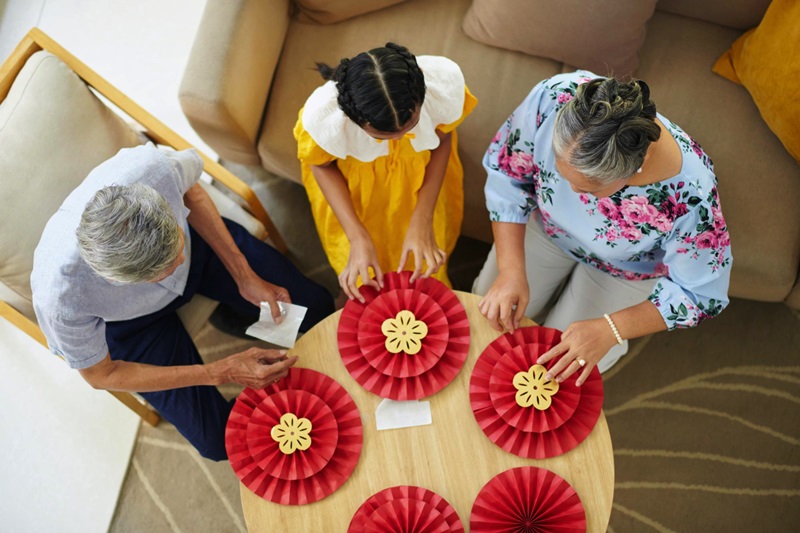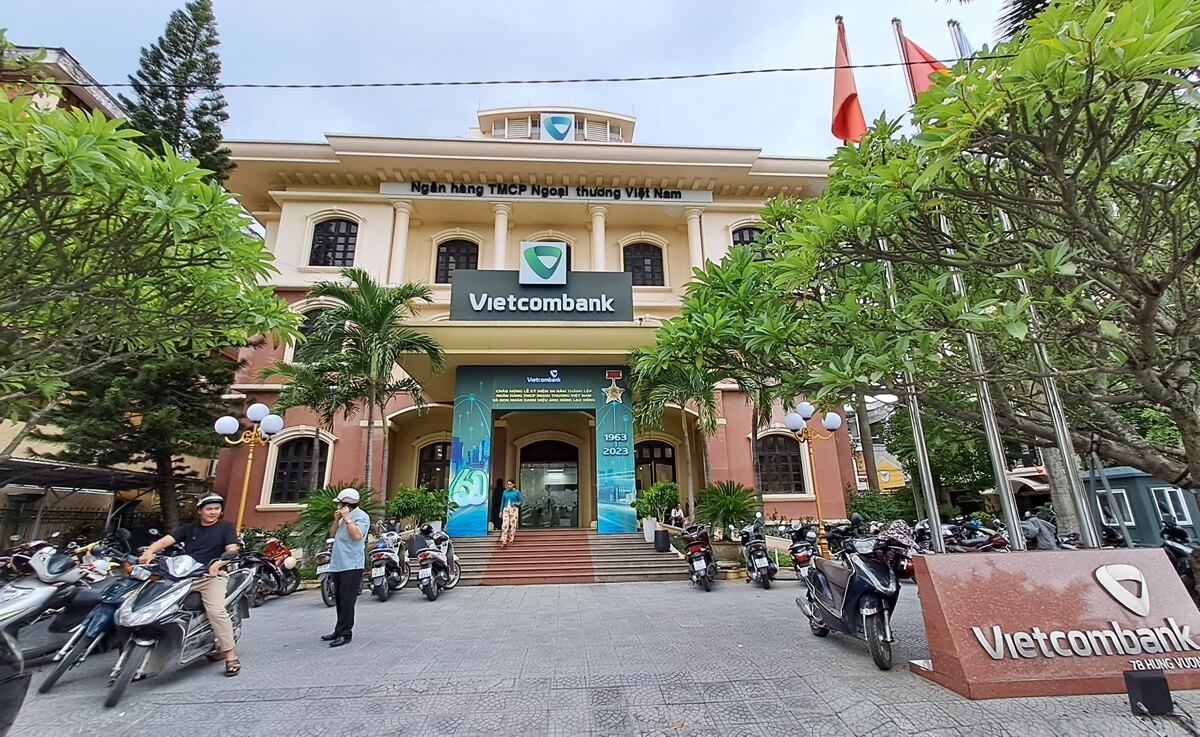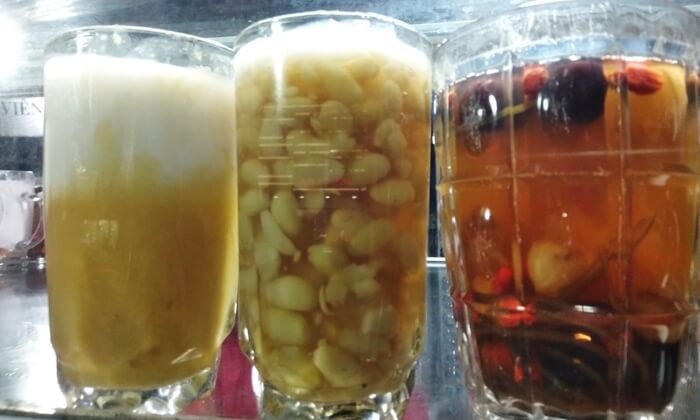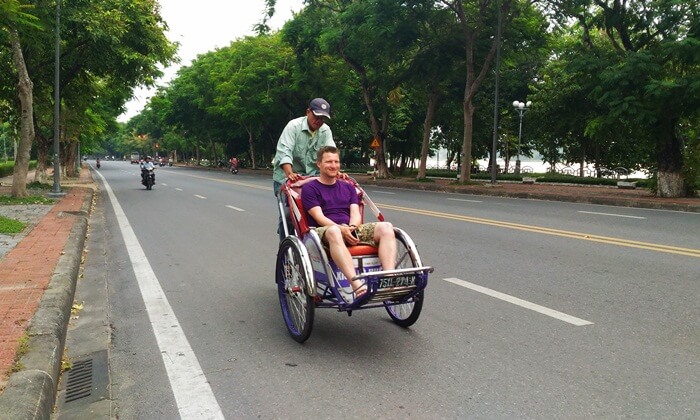“Tết” comes from “Tết Nguyên Đán”, meaning the Lunar New Year, which is the most important traditional holiday in Vietnam. Every year, Vietnamese people often spend at least one week to welcome this festival.
Many outstanding rituals and activities take place during Tet. This traditional festival completely encapsulates the most beautiful things in Vietnamese culture.
- Tet festive period
- Meaning of the Lunar New Year
- The main activities during the Tet holidays
- Traditional dishes during Tet
- Abstinence during Tet
- Tet outfit
- Popular New Year wishes
- Travel to Vietnam during Tet
- Tet vs Chinese New Year
- Conclusion
1. Tet festive period
Like most Asian countries, Vietnam has two parallel calendar systems, including the Solar Calendar based on the rotation cycle of the sun and the Lunar Calendar based on the movement cycle of the moon. Tet’s traditional festival starts when the old lunar year ends and the new lunar year begins.
Based on the solar calendar, Tet every year usually falls from late January to mid-February. However, this period is not fixed for each solar year because it depends on the difference between the lunar and solar calendars.
To know the correct Tet date of any year is necessary to rely on the Lunar-Solar calendar reference system. Currently, there are many online tools to help make this reference. You can refer to Lich Van Nien.
2. Meaning of the Lunar New Year
Originating from wet rice culture, Vietnamese people rely on the moon’s movement cycle to predict the weather. From there, they decide when to sow seeds for the new year’s crop to avoid risks caused by natural disasters. Through a long process of gathering experience, they realized that the old year ended when farmers had just finished sowing seeds for the new crop.
At this time, Heaven and Earth entered a favorable period of rain and wind. Farmers, after completing their farming work, have free days in the middle of the crops to spend time with family and relatives. In addition, they prepare offerings to their ancestors, Heaven and Earth. The purpose is to pray the new season will be favorable and bring abundant and prosperous harvests.
From that meaning, over thousands of years, Vietnamese people have chosen the time of ending the old year and entering the new year as their most important traditional holiday and call it Tet.
Nowadays, Lunar New Year has become the biggest holiday of the year for families to gather together. Most people, whether working or studying away from home, try to return to their hometown to celebrate Tet with their families, grandparents, and parents.
Furthermore, this is also an essential occasion to offer incense to ancestors to demonstrate the spirit of always looking towards the roots of Vietnamese people.
Tet is also an opportunity to summarize what has passed throughout the year. The locals will check what they did and what has not been done or unfinished, and then, on that basis, they set goals and plans for the new year.
Tet is also when people put aside the old, erase past unpleasant things, and welcome new beliefs and hopes. Make a wish for a more peaceful, lucky, and favorable new year.
3. The main activities during the Tet holidays
There are many activities proceed to welcome Tet. Typically, starting from the middle of the 12th lunar month, all works preparing for this event have become bustling throughout the country.
Among them, there are vital activities as below:
3.1. Decorating the house:
Decorating the house is considered a mandatory thing every Tet holiday. Depending on each family’s conditions, the time to do this work can be early or later. Typically, many families clean their houses from the first days of the 12th lunar month. But there are also many cases where people don’t start cleaning the house for Tet until the last day of the old year.
Specifically, a few careful people repaint their houses so that everything can be new and bright in the new year. Meanwhile, most people choose to clean the entire home thoroughly. Throw away unnecessary things and buy fresh items.
After the house has been tidied up, Vietnamese people will decorate the living space with brightly colored fresh plants and flowers. Sometimes, they hang red lanterns to wish for good luck and ward off evil spirits.
Previously, during the traditional Tet holiday, the Vietnamese also had the custom of “asking for words”. They went to the village’s most beautiful hand writers to ask them to write couplets with good meanings on red paper, which they called “red couplets”. They hang red couplets on the most solemn area of the house. Nowadays, this custom no longer exists; instead, people choose to hang small red cards with beautiful, modern designs on flower branches and decorative pots in their homes.
3.2. Tet Ong Cong Ong Tao and the New Tree building ceremony:
These ceromonies evolve on the 23rd day of the 12th lunar month. This milestone marks the arrival of the Tet holidays.
In Vietnamese culture, Ong Cong Ong Tao is the name for the three Kitchen Gods and is often shortened to Ong Tao or Kitchen God. These three gods are responsible for taking care of every family and protecting their happiness and peace.
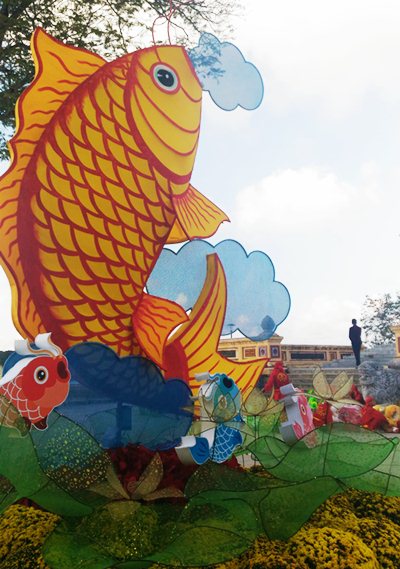
On the 23rd day of the 12th lunar month every year, the three kitchen gods will return to heaven to present what has happened in life over the past year. Therefore, most locals prepare offerings to send Ong Tao back to heaven. This way shows gratitude to the three gods for protecting their family. Also, they hope the kitchen gods will send their wishes to Heaven or God, hoping everything will be smoother and better in the next year. The farewell ceremony for Ong Tao is called Tết Ông Công Ông Táo.
In the ceremony to worship Ong Tao, a carp is indispensable in addition to the tray of rice, meat, wine, and tea. It is because the Vietnamese believe that the Kitchen Gods always use carp fishes as a mount to fly to the sky. The carp used in the Kitchen God worshiping ceremony is live carp. After the worshiping ceremony, the homeowner will bring the fish and release it into the river.
According to legend, after the gods who govern the human world return to heaven, demons will take the opportunity to rise and attack humans. Therefore, to prevent evils from harassing them, the gods taught people how to grow Neu trees.
The Neu tree is made from the stem of a long bamboo tree. On the bamboo tops, people hang bunches of pandan leaves, small bells, betel nuts, red lanterns, or strips of red cloth.
After the Tao Quan farewell ceremony, the Neu tree will be planted in the middle of the house’s front yard. Seeing the Neu tree is to see Tet is coming.
3.3. Tomb cleaning for Tet:
Cleaning the tombs is when children and grandchildren in the family come together to clean, repair, and offer incense at the graves of grandparents and ancestors. This ritual usually happens after the 15th day until the 30th day of the 12th lunar month.
Almost no Vietnamese family skips this activity. It is associated with the spirit of filial piety, remembering the descendant’s roots. They assume that if they haven’t cleaned the grave, they won’t be able to celebrate Tet with peace of mind.
3.4. Presenting a five-fruit tray
When it comes to Vietnamese Tet, the five-fruit tray is indispensable on the altar. The Vietnamese prepare this fruit tray from the 29th or 30th of the 12th lunar month.
Traditionally, the five-fruit tray will have 5 main types of fruit, including custard apple, young coconut, green papaya, mango, and fig bunch or pineapple. The tray forms the meaning of WHISHING ENOUGH TO SPEND (Cầu vừa đủ xài).
In addition to the fruits above, depending on the family, the five-fruit tray can be a random display of other popular Vietnamese fruits, such as bananas, custard-apple, watermelon, papaya, mango, dragon fruit, longan, red apple, grapefruit, and orange.
Although the type of fruit each person chooses may be different, what they have in common is that they are all selected and presented in a formal way. It represents the beauty and respect that children and grandchildren in the family show to their grandparents and ancestors.
3.5. Year-end ceremony and the 30th day of Tet
Tet officially begins on the 1st, 2nd, 3rd days of the first lunar month. However, the 30th day of the 12th lunar month of the old year is equally important. Almost all families complete all necessary work on this day and conduct offerings to their ancestors’ altars.
The core meaning of the ceremony on the 30th day of Tet is to thank grandparents and heaven and earth gods for their blessings all year long. Next, they respectfully invite grandparents – the deceased, living in heaven and earth, to come to the family with their children and grandchildren to celebrate the unique festival.
Before that, the Vietnamese also celebrate the year-ending party. This ceremony does not follow the regulations on any date and time; however, it often takes place between the 16th and the 30th day of the 12th lunar month.
The year-end party is not mandatory, so it depends on each specific family whether to celebrate this ceremony or not. Families with rich time and a big budget often organize a grand celebration with more attendees and a bustling party.
On the contrary, families with busy schedules or limited financial conditions will combine the year-end party with the worshiping ceremony on the 30th day of the Lunar New Year.
3.6. Celebrating New Year’s Eve:
Just like New Year’s Day in America, Europe, or Australia, the New Year’s Eve moment is also essential for Vietnamese Tet.
At this moment, everyone in the family will gather together. They set up a tray of offerings to pray for their ancestors and heaven and earth, praying for peace to come to everyone and every home. Family members say congratulations and love to each other. They enjoy some delicious and light dishes together.
3.7. Worshiping ancestors during Tet:
During the three official Tet days, worshiping ancestors is the most important and solemn ritual.
Incense, flowers, cakes, fruits, tea, wine, betel, areca, banh chung, and banh tet are always present on the altar during the first three days of the year. In addition, on every Tet day, Vietnamese people have elaborately prepared offerings to offer to their ancestors.
The Tet offering tray usually includes rice, braised pork, boiled chicken, stir-fried vegetables and beans, fruit and vegetable soup, crispy fried spring rolls, braised fish, pickled onions, boiled pork, banh chung, banh tet, bitter melon soup, and meat rolls.
3.8. Visiting grandparents and relatives:
Visiting grandparents and relatives is a beautiful feature of Tet culture, demonstrating the spirit of drinking water and remembering its source, and the nature of a close community.
As a general rule, on the first day of the year, children and grandchildren must come to greet and wish New Year to their parents and grandparents and offer incense at the clan temple.
After that, they visit their uncles and aunts. In order of priority from the family of the person with the higher rank to the families of their same ranking.
Visiting close friends can only come after completing the task of visiting relatives in the family. Usually, meeting friends is at the end of the 2nd day and the 3rd day of the Lunar New Year.
In particular, there is also a quite interesting cultural feature associated with visiting Tet activities, which is Li Xi. Lucky money is something adults give to children in close families they meet at the beginning of the new year. A few notes in denominations ranging from 10,000 VND to 50,000 VND are put in a red envelope. This action means wishing good luck to both the person giving the gift and the child receiving the gift.
Previously, giving lucky money was only given when meeting a child. But today, lucky money also has the meaning of a small gift to wish the elders in the family a long life. When wishing longevity to an elder, the amount of money in the red envelope will have a larger denomination and correspond to a value. This lucky money usually has a face value of 200,000 VND or more. This note is to ensure respect for both the giver and the recipient.
3.9. Attend festivals and go to pagodas to pray for peace:
In addition to ritual activities associated with the culture of family, clan, and village life, spring festivals and pagoda ceremonies can enrich every time Tet comes.
Many festive activities happen across the country, lasting from the 20th day of the 12th lunar month until the 15th day of the 1st lunar month. The earliest is the Neu Tree building ceremony, the New Year’s Eve ceremony in the village and hamlet, and the Tet flower festival.
In the new year, there are more and more festivals, such as the pen-opening activity and the seal-opening festival at Tran temple. Boat racing, wrestling, pearl catching, etc have become the popular games in Vietnam during this period. These festivals are all organized quite grandly by the local government and attract a large number of attendees.
Besides, going to the temple to pray for peace for the whole family is also paid attention. Every Tet holiday, pagodas all over Vietnam attract a large number of people to come and offer incense. They believe this activity will bring peace to the whole family in the new year.
Indeed, Vietnamese Tet is an occasion of convergence and blooming of a series of cheerful and bustling festivals. People everywhere take advantage of completing all family rituals to participate in the festivals. All over the streets, people dressed up in new clothes, bustling with laughter, dispelling the fatigue of the old year, welcoming the new year with new beliefs and desires.
4. Traditional dishes during Tet
Depending on each region, the traditional dishes in the Tet feast are slightly different. But in general, the main foods will include:
- Chung cake, Tet cake
- Pickled onion: depending on the region, the pickled onion will be slightly modified and become various dishes, such as pickled vegetables, pickled vegetables, and pickled onions.
- Fried spring rolls
- Braised meat with eggs from the Southerners/ Meat soaked in fish sauce from the Central people/ Frozen meat from the Northerners
- Stewed fish
- Cha Lua (spring rolls)
- Chicken boiled in lemon leaves
- Nem chua from the Central people/ Sausage from the Southern people/ Pork sausage from the Northern people
- Bitter melon soup or other types of roots and fruits
5. Abstinence during Tet
With the meaning of the moment to welcome the new and erase the old, so there are things that most people avoid doing during Tet, such as:
- Don’t say bad or unlucky things.
- Families who have recently passed away and women who are pregnant or have given birth less than 3 months usually do not come to other people’s houses to wish them Happy New Year.
- Do not wear dark-colored clothes, such as black, purple, gray, or an entirely white outfit.
- Do not borrow money from others, and do not collect debt.
- Avoid arguing during Tet days.
- Do not eat strange dishes: dog meat, duck meat, shrimp, squid, balut eggs, and bananas.
They believe that doing the above things on the first days of the new year will bring misfortune and bad luck for the whole year.
6. Tet outfit
Vietnamese people believe Tet is when you should only rest and do new and beautiful things. The costumes in the Lunar New Year are also necessary to pay attention to.
Before every Tet holiday, people often go shopping for new outfits to celebrate the festival.
These clothes in Vietnam are relatively diverse in style. However, there are still a few important requirements for the costumes, such as ensuring bright colors and being suitable for each specific situation and space in which they appear. Such as:
- You need to dress politely and discreetly when you go to the other’s house to wish good luck to grandparents, friends, and relatives.
- On the contrary, if you walk around in the spring, your outfit is much more free-styled.
- In addition, costumes with dark colors, such as black, gray, purple, or just white, are not suitable to wear on Tet. Especially, when visiting other people’s homes on New Year’s Eve, you should avoid wearing these dark-colored clothes.
Nowadays, the Vietnamese ao dai is no longer a mandatory outfit during Tet. However, many women and girls still like to choose this outfit when walking around, taking photos, and going on spring trips with their families and friends.
7. Popular New Year wishes
Every Tet holiday is when people in Vietnam send each other good wishes. Wishes have general meanings such as:
- Happy New Year!
- Wishing you a happy and prosperous new year, and everything goes well!
- Wishing you good health and prosperity in the new year!
- Wishing your family happiness, prosperity, and peace!
In addition to greetings with general meanings, depending on each specific object, there are particular wishes, such as:
- When meeting a child, adults often give wishes: Wishing you to study well in the new year, eat well, sleep well, and grow up quickly!
- If to a young person, the wish is usually: Wishing you a happy new year, achieving much success in work and study, becoming more and more beautiful and always youthful!
- You can wish businessmen: a Happy New Year, good business! And more and more customers come. This year’s revenue is many times higher than last year’s.
- Young families like to receive wishes: Wishing the family happiness, obedient children, (more children, more wealth), and good health for the whole family.
- The most important wish is for the elders: To wish you good health and a long life living with your children and grandchildren.
No matter who the target is, the wishes are for the hope that a lucky, favorable, happy, and peaceful new year will come to everyone.
8. Should you travel to Vietnam during Tet?
Traveling to Vietnam during Tet is a good opportunity to learn about the culture of this country. Many unique festivals are organized from North to South Vietnam, giving you different experiences. At the same time, this is also considered the time with the cool weather of the year, favorable for outdoor activities.
However, it comes with a few inconveniences, such as crowded traffic and the higher prices of almost all services. You will even have difficulty finding transportation. Many restaurants closed. Many tourist entertainment services are not operating because most employees are on Tet holiday due to government regulations.
Therefore, the answer to whether or not you should travel to Vietnam during Tet will depend on your favorite thoughts. If you are ready for the above inconveniences, you will have a colorful vacation on Vietnamese New Year.
9. Is Vietnamese Tet the same as Chinese New Year?
The timing of Vietnamese Tet and Chinese New Year almost coincide. In some special leap years, they will be different because the way of calculating leap years (in months) is various in each country.
Conclusion:
Through the above features, Vietnamdrive realizes that Tet is not only a time to rest but also a time to fulfill the responsibilities and duties of a Vietnamese person. Maintain traditional culture, be responsible to parents, grandparents, and neighbors, and give thanks to heaven and earth.
Traditionally, Tet is a leisurely agricultural period, so farmers have a lot of time for complex ritual activities. Today, urban life is busy with a lot of work throughout the year. Therefore, people do not have too much free time for long ritual activities.
Therefore, many young people today are feeling tired every time Tet comes. They tend to gradually reduce unnecessary rituals to make Tet become a resting day, relaxation, and family reunion.
